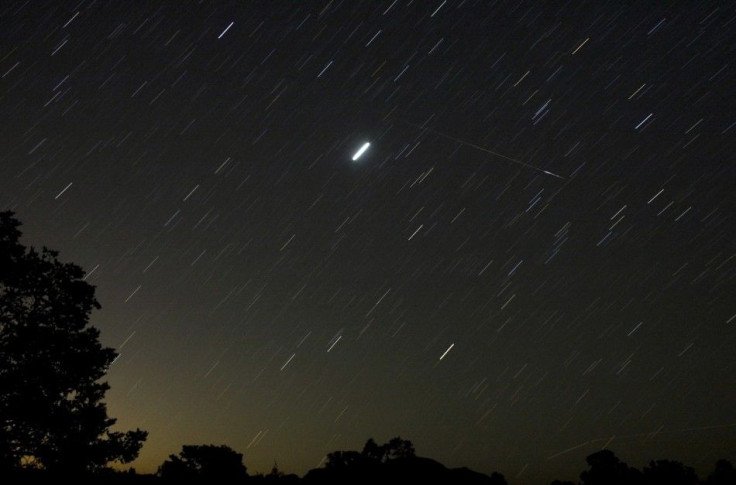What Is The Perseid Meteor Shower? The Solar Viewing Party Of The Year Kicks Off Next Week

The Perseid meteor shower is the biggest solar viewing party event as anyone gazing up at the night sky will witness something spectacular. The Peseid meteor shower’s peak will occur between Aug. 12 and Aug. 13.
The Perseids is an annual viewing event that NASA calls “the best meteor shower of the year” and during peak activity, up to a 100 meteors an hour can be viewed streaking across the night sky. The Perseid meteor shower also produces plenty of fireballs, incredibly bright meteors, which add to the spectacle.
The August show is due to comet Swift-Tuttle. The comet has a 133 year orbit and made its last pass in 1992. While the comet has no chance of colliding with Earth it has an incredibly large nucleus, 26 kilometers, just over 16 miles, in diameter. The comet was discovered in 1862, independently, by Lewis Swift and Horace Parnell Tuttle. Comet Swift-Tuttle is classified as a Halley-type comet, any comet with an orbit between 20 and 200 years.
As Swift-Tuttle orbits around the sun, it leaves a trail of debris behind. This trail of debris hangs in space and every August the Earth’s orbit leads the planet into the middle of the debris, producing the Perseids. The meteor shower got its name because the origin of the meteoroids appeared to be from the constellation Perseus. The meteoroids range in size but travel at an incredible speed, up to 132,000 miles per hour, upon entering the Earth’s atmosphere, where they are then classified as meteors.
The Perseid meteor shower has a long history of observation, thrilling viewers as far back as the 36 AD, reports Meteor Showers Online. Chinese records from that time describe an August meteor shower while records from China, Japan and Korea from the 8th century to the 11th century also describe the Perseids. The meteor shower also has another name, “The Tears of St. Lawrence,” as the saint day of the martyred Christian deacon Laurentius, Aug. 10, occurs at the same time as the peak of the Perseid meteor shower, reports the Raw Story.
With the potential to see hundreds of meteors, and scores of fireballs, the Perseids will be “must see” viewing. The peak of the Perseids happens on Aug. 12 and 13.
© Copyright IBTimes 2024. All rights reserved.












